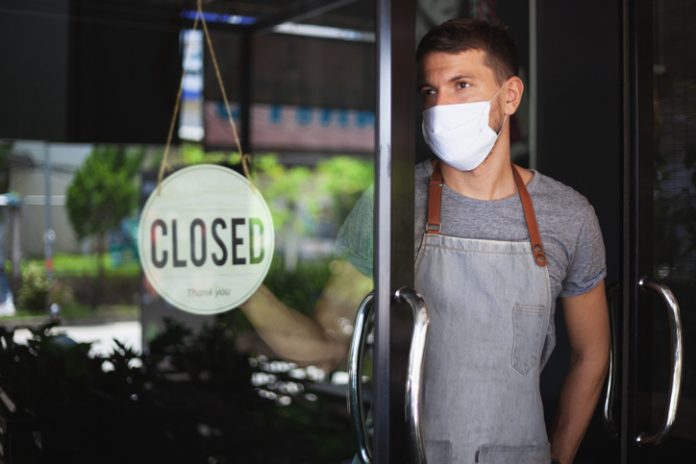Confusion and misinformation have made it difficult to gauge the impact of the omicron variant on the economy and work. Data that tracks unemployment rates since the start of the pandemic provides a rough guide.
New data from the Bureau of Labor Statistics (BLS) reveals that by September of this year, the number of unemployed people per job opening (0.7) was slightly lower than it had been in January 2020, before the pandemic. This is a significant improvement from the high point in April 2020, when there was an average of five unemployed Americans for every available job.
The extent to which omicron will change the course of the personal and work habits of Americans is unknown in these early stages, but there are reasons for concern and caution. On Dec. 20, the Centers for Disease Control and Prevention (CDC) estimated that the variant accounted for more than 73 percent of new cases in the country, up from about 13 percent just a week earlier.
Bars and restaurants in some states are already closing voluntarily to protect both their staff and customers. Within weeks of the first omicron case detection in New York City, a third of the shows on Broadway closed.
The variant is so new to public health officials in the U.S. that it’s not possible to say anything definitive about it. It seems to be more transmissible than the delta variant but estimates of how much more have varied wildly. Some say it causes milder illness, others counter that the increase in cases could be enough in itself to overwhelm the health-care system.
The proliferation of misinformation and confusion by “armchair epidemiologists” is making it harder to understand these new developments and the appropriate response to them, says Brian Castrucci, president and chief executive officer of the de Beaumont Foundation. “What used to be something that was done in health departments by government staff and epidemiologists is now being done by people who have no real understanding of the data.”
Earlier this year, the BLS published employment projections between 2019 and 2029 that compared the potential consequences of “moderate” and “strong” pandemic impacts on both consumer behavior and companies. This analysis included the impact of factors such as increased teleworking, reduced business travel and changes in consumer behavior as well as greater demand for IT and investments in medical research.
The prospects for “strong” versus “moderate” impacts can’t be predicted at this time. Their scale reflects the persistence of widespread illness and the extent to which consumers and business owners decide that “business as usual” involves more risk than they are willing to bear.

The business closures and restrictions that state and local governments mandated when the magnitude of COVID-19 public health risks became apparent severely impacted employment. Public resentment over such actions may now outweigh the political will to reintroduce them in many states, and a widespread return to such measures is not expected.
The differences between the past year and the year that lies ahead are considerable. Vaccinations are now available, as well as treatments including an antiviral drug (currently in short supply). Much has been learned about the best strategies for reducing risk of transmission and treatment for seriously ill patients.
On the other hand, hospital facilities and staff remain overburdened. Thousands have left their public health jobs. Politicians in some states have forbidden public health measures such as masking because they believe them to be scientifically unproven infringements on individual rights. It’s not certain that a second infusion of federal funds could be managed to fill the gaps if employment falters significantly.
One way to contemplate the potential impact of a winter surge in cases on unemployment is to look at what happened last winter. BLS data shows the month-by-month progression in each state, as measured by available jobs per unemployed person. (Use the slider in the map below to see month-to-month trends.)
This cannot be viewed as a definitive predictor of what lies ahead, but it does present empirical data regarding the ebb and flow of employment during the year in which the pandemic appeared.
See interactive map.
Governing staff writer Zoe Manzanetti contributed to this report.
Originally published by Governing. Republished with permission.











